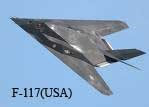AVATAR (Aerobic Vehicle for hypersonic Aerospace TrAnspoRtation, probably a acronym) is a conceptual single-stage reusable rocket planes which is capable of horizontal launch and land SSTO Reusable launch vehicle being developed by India's Defense Research and Development Organization along with Indian Space Research Organization (ISRO) and other research institutions, which can be used for cheaper military and civilian satellite launches.
When operational, it is planned to be capable of delivering a payload weighing up to 1000 kg to low earth orbit. It would be the cheapest way to deliver material to space at about USD 67/kg. Each craft is expected to withstand 100 launches.







